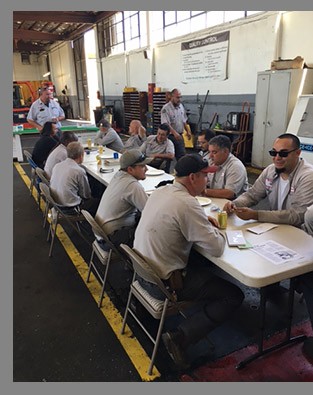
August 31, 2016
How to Prepare for Workplace Accidents


August 31, 2016

The sad truth is, accidents do happen. It’s always best to prevent accidents instead of respond to them. But sometimes life just gets in the way.
When an accident happens, you’ll have to respond. How? What should you do? That’s what we’re talking about in this issue.
We’re not talking about preventing accidents this month. We’ve done that before – go here for past issues:
Today we’re talking about preparations to make BEFORE an accident occurs.
Making preparations like these can help you decrease an accident’s severity. Help everyone get back to work. Even avoid some accidents altogether.
We’ve gathered preparations you can make below. They’re in 3 parts: policies to put in place, changes to the workplace environment, and day-to-day worker protections.
Setting policies on what to do in case of accident means that everyone has a reference. No matter who’s on shift, if they have an accident, you can check the policy and follow its instructions.
The first policy to create is an accident response policy. Document what you (the company) will do in the event of an accident, and what you’ve done to prevent them. Consult with your lawyer to cover liability issues.
(Include Workers Comp regulations too. If an injury occurs, the injured person must see an approved Workers Comp doctor. Make sure everyone knows who to call!)
Next, define evacuation strategies in case of fire, earthquake, or flood (yes, even flood).
Make and keep an equipment inspection policy. List the aspects each inspector must check on your equipment. Include what you’d classify as a “warning sign” to look out for.
Finally, include training in first aid, CPR, and AED in your policies. Train enough people that at least one person is available per shift. Two is better.
Most workplace safety precautions count as preparation for accidents. Just in case, let’s list them:
When it comes to protecting workers, preparations are obvious. But you might miss some of them if someone’s not careful.
First off, make sure workers are readily supplied with protective equipment such as gloves, helmets, and safety vests.
Next, keep workers’ communications systems (phones, emergency buttons, schedules) in good working order.
Here’s one you might not expect though. Avoid the notion of, “Production must go faster! Faster!” Too much speed causes people to rush. People rushing can topple trucks and cause collisions.
You may have some of these in place already. If so, you’re in good shape to minimize the impact of a workplace accident.
If not, and you’d like help preparing, call Cromer! Our team is happy to help you keep everyone safer.
Until next month!
Marshall Cromer, The Forklift Boss Cromer Material Handling
Cromer, Marshall. “The Forklift Boss Blog.” The Forklift Boss Blog. Cromer Material Handling, 8 Aug. 2016. Web. 31 Aug. 2016.
